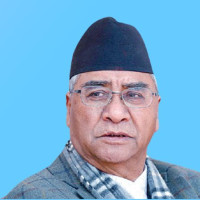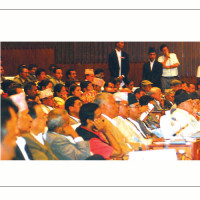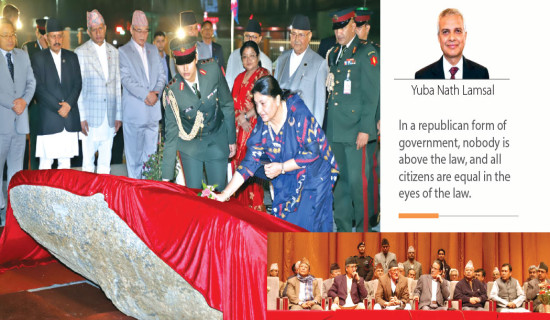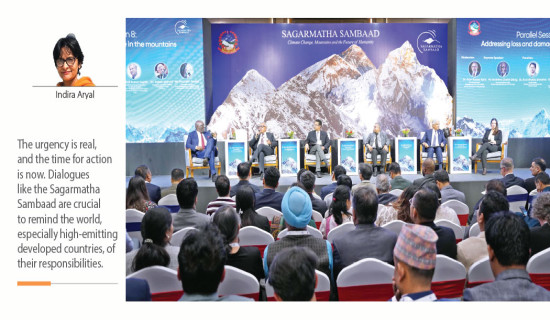- Thursday, 29 May 2025
Women's Sports Gain New Height
The recent success of the Nepal National Women’s Cricket Team (NNWCT) has made headlines across Nepali media, earning praise from both the public and political leaders. The team has made the nation proud by securing a place in the Global Qualifier, fulfilling the long-held dream of many players and fans. This achievement has not only created a buzz in Nepal’s sports sector but also inspired thousands of Nepali girls to become active in sports and dream of representing their country on national and global stages.
In May 2025, the Nepali Women’s Cricket Team defeated the United Arab Emirates by five wickets in the Super Three Stage of the ICC Women’s T20 World Cup Asia Qualifier, earning their spot in the Global Qualifier. The NNWCT made its international debut in the ACC Women’s Tournament in Malaysia in July 2007 and has since participated in several international events. Currently, the team is captained by Indu Barma.
Media coverage
Women’s participation in sports is gaining momentum globally. A decade ago, men's football and cricket received the bulk of media coverage and viewership. Today, women's sports are drawing increasing attention, with more people tuning in to watch and support female athletes. In Nepal, too, women’s matches are starting to attract fans to stadiums, especially as the national women’s cricket and football teams continue to make headlines.
The Paris Olympics were celebrated as the most gender-equal Games in history. Around the world, women athletes have had to work harder than their male counterparts to gain recognition. Yet their relentless efforts and outstanding achievements are breaking records, defying stereotypes, and inspiring the next generation. Just like the NNWCT, many female athletes are becoming role models, showing young girls that sports can be both a passion and a profession.
Sports instil essential life skills in children. Those who engage in sports during their childhood and teenage years often develop self-esteem, confidence, resilience, and teamwork. While boys are commonly encouraged to pursue sports from a young age, girls often face discouragement. According to UN Women, girls who participate in sports are more likely to stay in school longer, delay pregnancy, and secure better employment. Remarkably, 80 per cent of female CEOs of Fortune 500 companies played sports in their formative years, underlining the powerful role sports can play in empowering women.
A global audience survey by Parity Now revealed that 92 per cent of respondents believe it is important for girls to play sports, with 61 per cent saying it is “very important.” Despite these clear benefits, girls drop out of sports at twice the rate of boys by the age of 14. This is due to several factors, including social expectations and a lack of investment in quality sports programs for girls.
The media plays a pivotal role in advancing women’s sports. In today’s digital age, sports events attract global audiences that were once limited to local reach. As women’s sports gain more attention, significant steps are being taken, such as the Olympic Broadcasting Services hiring 35 female commentators for Paris 2024, raising the percentage of female commentators to nearly 40 per cent. This marks an almost 80 per cent increase from Tokyo 2020 and over 200 per cent from Rio 2016. These developments show that women’s sports are finally gaining long-overdue recognition.
Olympic events are the most-watched sporting occasions, but historically, women's games received minimal media coverage. Part of the problem was that the marketing industry did not view female athletes as marketable. However, data shows that during the 2024 Summer Olympics in France, media coverage of women's sports tripled compared to 2019. If this trend continues, women’s share of sports coverage could reach 20 percent by 2025.
Social media is another powerful platform for amplifying women’s sports. In Nepal, the social media space buzzed with pride after the NNWCT’s recent victory, spreading the news to every corner of the country. According to UN Women, social media conversations around women's sports rose to 18.5 per cent in 2022, with an average annual growth of 2.53 per cent. Furthermore, 80 per cent of social media users view professional women athletes as positive role models for young women.
The 2023 FIFA Women’s World Cup became the most-watched women’s sports event in history, attracting nearly 2 billion viewers. On August 30, 2023, a world record was set in Lincoln, Nebraska, where 92,003 fans attended a women’s volleyball doubleheader. This was followed by a sold-out UEFA Champions League semifinal hosted by the Barcelona women’s football team. According to UN Women, seven in ten people now watch women’s sports, with 54 per cent of female fans saying they only started watching in the last three years — an encouraging shift likely driven by better representation and media coverage.
Equal pay
In 1973, tennis legend Billie Jean King founded the Women’s Tennis Association, advocating for equal pay. Today, all four major tennis tournaments offer equal prize money. Countries like Australia, Norway, New Zealand, and Brazil have committed to equal pay for their national football teams. After a lengthy legal battle, the U.S. Women’s National Soccer Team secured a landmark equal-pay settlement, including $22 million in compensation for past discrimination. In 2023, the Women’s World Cup awarded $150 million in prize money — an increase of 300 per cent from 2019, though still only one-third of the $440 million awarded in the men’s tournament in 2022.
These are significant strides in promoting women’s sports and demonstrating that women can excel in any sport when given the opportunity and resources. Yet, despite these gains, female athletes still face major challenges, including limited access to professional opportunities, persistent pay gaps, fewer sponsorships, reduced media exposure, and unequal playing conditions.
In countries like Nepal, the journey for girls and women aspiring to become professional athletes remains tough. However, the example set by the NNWCT and the growing support for women in sports are encouraging signs. These developments must be built upon as stepping stones for greater gender equity in the sporting world.
(Sharma is a senior journalist and women’s rights advocate. namrata1964@yahoo.com or on X @NamrataSharmaP.)
















